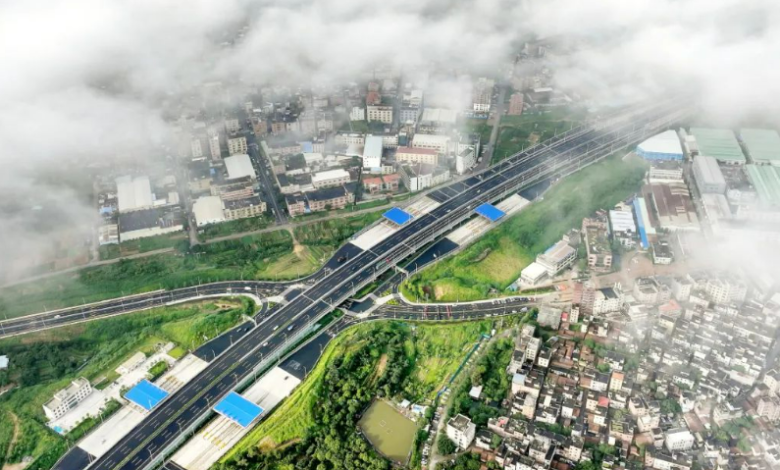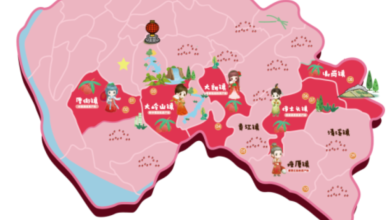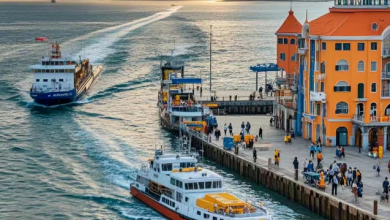Dongguan Metro Line 3: Dongkeng Town Embraces the Arrival of the Metro Era

In a major step forward for public transportation and regional connectivity, Dongguan Metro Line 3 has been officially included in the city’s 2025 key pre-construction project plan. Even more exciting for residents of Dongkeng Town, the long-anticipated Dongkeng Station and Dongkeng East Station have been confirmed—officially bringing an end to Dongkeng’s “zero metro” status.
This development marks a significant milestone not just for Dongkeng, but for the broader Dongguan region. Metro Line 3 will stretch 51.5 kilometers, acting as a vital link between Binhaiwan New Area and Songshan Lake High-Tech Zone, transforming into a “Golden Bay Area Corridor” that fuels urban renewal, industrial growth, and people-centered development.

🚉 Two Stations in Dongkeng: Designed with the Future in Mind
According to the latest planning, the first phase of Dongguan Metro Line 3 will begin at Jiaoyiwang Station and end at Dongguan East Station, spanning several major towns and districts including Binhaiwan New Area, Chang’an, Dalingshan, Songshan Lake, Dongkeng, and Changping. A total of 20 stations will be constructed, with two key stations in Dongkeng: Dongkeng Station and Dongkeng East Station.
Dongkeng Station will be located at the intersection of Dongkeng Avenue and Junda Middle Road—adjacent to the town’s central area and near major industrial parks along Keji Road. The location boasts a rich cluster of government services, enterprises, shopping centers, schools, and well-established neighborhoods.
Meanwhile, Dongkeng East Station, positioned at the crossroads of Keji Road and Dong’an Road, will serve as a hub linking industrial zones to the metro network—enhancing commuter convenience and improving logistics efficiency for local businesses.
Urban planners in Dongkeng have confirmed that both stations will be developed under the TOD (Transit-Oriented Development) model. This means the surrounding areas will be comprehensively designed to support mixed-use developments that emphasize walkability, density, public services, and integrated urban living, turning metro stations into engines for urban transformation.
🚗 Metro + Highway + Intercity: Dongkeng Steps Into the Fast Lane
The inclusion of Metro Line 3 is just the latest achievement in Dongkeng’s ongoing effort to build a modern, high-efficiency transportation network. In recent years, the town has invested heavily in road infrastructure to unlock its development potential.
Not long ago, Dongkeng Interchange on the Guan-Fan Expressway opened to the public, ending the town’s long-standing absence of direct highway access. Previously, Dongkeng’s limited connectivity made it harder to attract investment and talent, while logistics costs for local businesses remained high.
Today, vehicles can access the expressway from Dongkeng’s “doorstep,” reaching 11 surrounding towns and industrial zones with ease, and quickly connecting to several provincial-level expressways. This improvement has slashed logistics costs, attracted a wave of new enterprises, and elevated the local business environment—paving the way for economic revitalization.
Within Dongkeng itself, new connector roads and upgraded infrastructure—such as the completed Ecopark Avenue Link—have significantly enhanced the town’s internal and external traffic flow. The formation of a “four-horizontal, four-vertical” road network has reshaped mobility patterns, supported regional integration, and accelerated the pace of urban development.
Metro Line 3, when operational, will serve as the final puzzle piece—complementing existing roads and highways with high-speed, punctual, and eco-friendly rail service. Commuters will gain direct access to key intercity rail lines, such as the Guangzhou-Shenzhen Intercity, Guanghui Intercity, and the Hong Kong-bound Guangzhou-Kowloon Railway. Travel between Dongguan, Guangzhou, Shenzhen, and beyond will become faster, cheaper, and more reliable.
🕐 Dongkeng Enters the “1-Hour Living Circle”
As outlined in the recently released Dongguan Territorial Spatial Plan (2021–2035), the city will adopt a “1+2+6” urban development structure, where Dongkeng is officially designated as part of the Songshan Lake Functional Zone. This integration will further improve Dongkeng’s synergy with surrounding areas, especially in terms of innovation, infrastructure, and industrial cooperation.
Already, Dongkeng has transitioned from a dual-industry economic model to a “three-engine” approach, diversifying its development foundations. The arrival of Metro Line 3 will allow Dongkeng to fully integrate into the Greater Bay Area’s one-hour living circle, making it easier for professionals, entrepreneurs, and innovators to move, live, and work across city boundaries.
More importantly, Dongkeng will benefit from future interchanges with Dongguan Metro Line 2, Shenzhen Metro Line 20, and other regional transit systems, helping the town gain traction as a strategic connector between inland Dongguan and coastal innovation hubs.
🏙 Looking Ahead: Dongkeng Rises with the Bay Area
The confirmation of Dongkeng’s dual metro stations signifies more than just a transportation upgrade—it represents a leap into the future. From infrastructure to urban planning, from industry to lifestyle, Dongkeng is positioning itself as a vital extension of the Songshan Lake Tech Zone, and a rising node in the Greater Bay Area’s development blueprint.
With enhanced connectivity, strategic planning, and people-centered design, the town is primed to attract high-tech enterprises, boost investment, and improve the quality of life for its residents.
As Metro Line 3 begins to take shape, the once “metro-less” Dongkeng is set to become a model for smart, inclusive, and integrated urban development. For residents, workers, and investors alike, the “Dongkeng Metro Era” is not just coming—it’s already underway.





